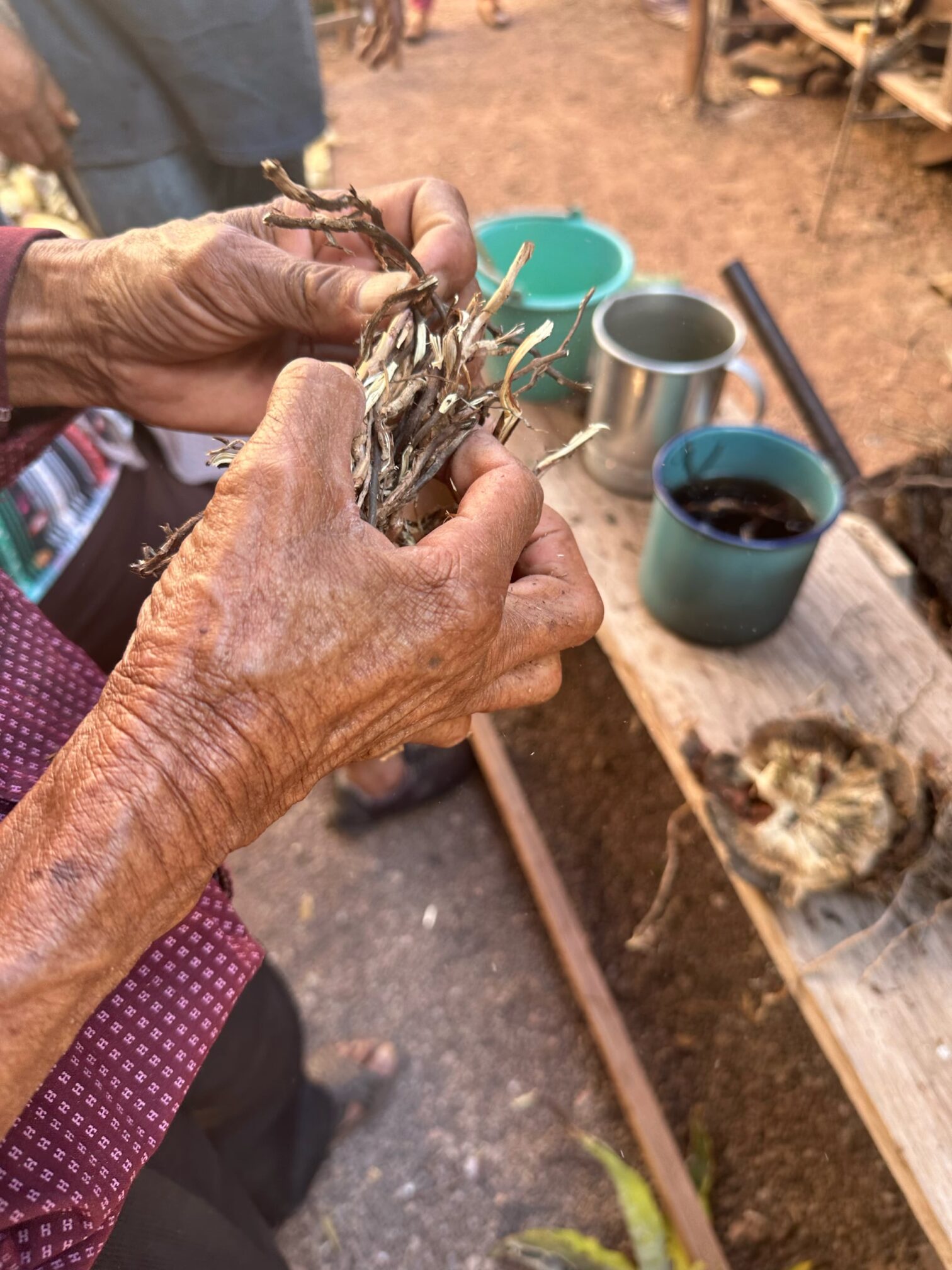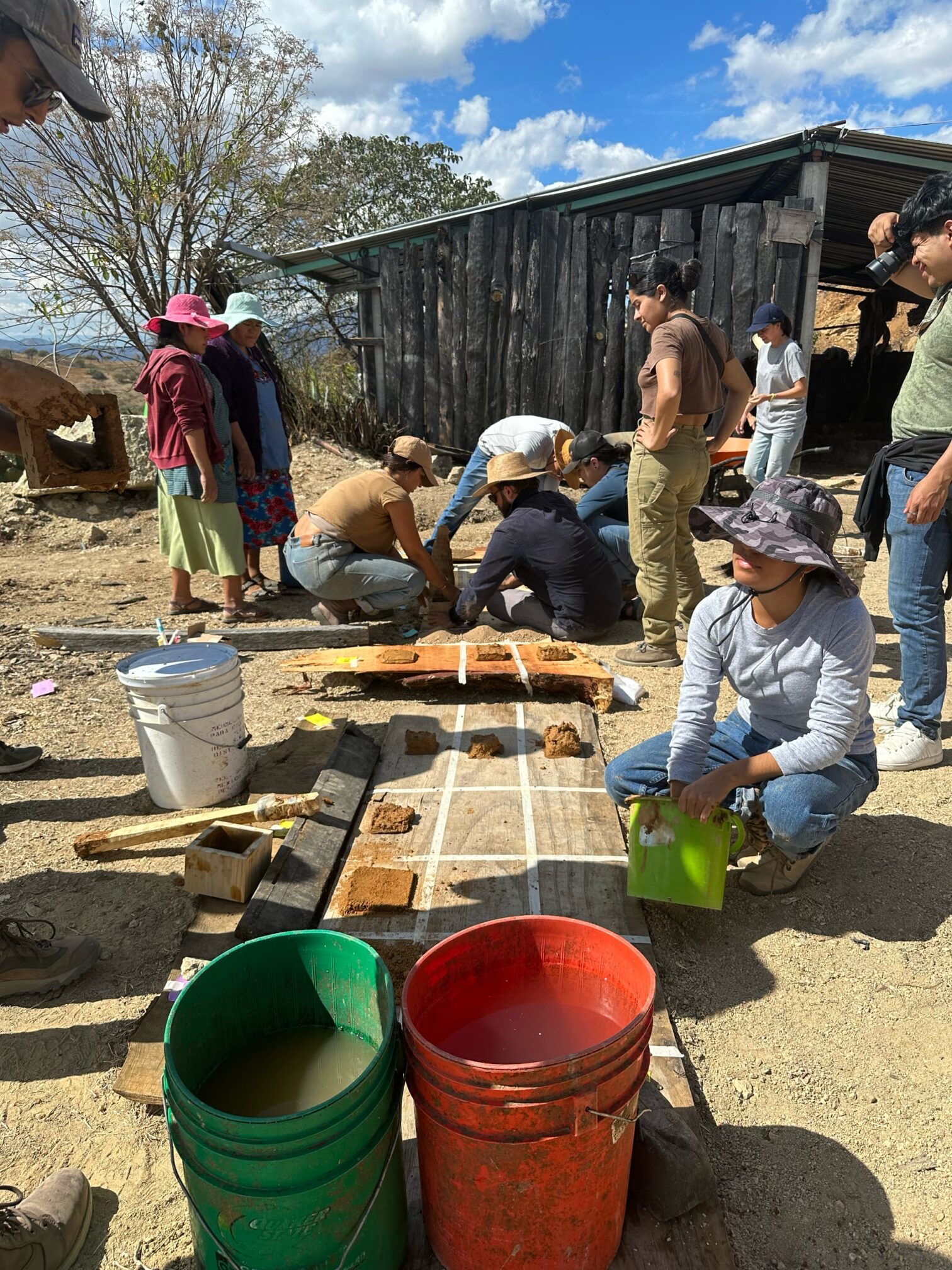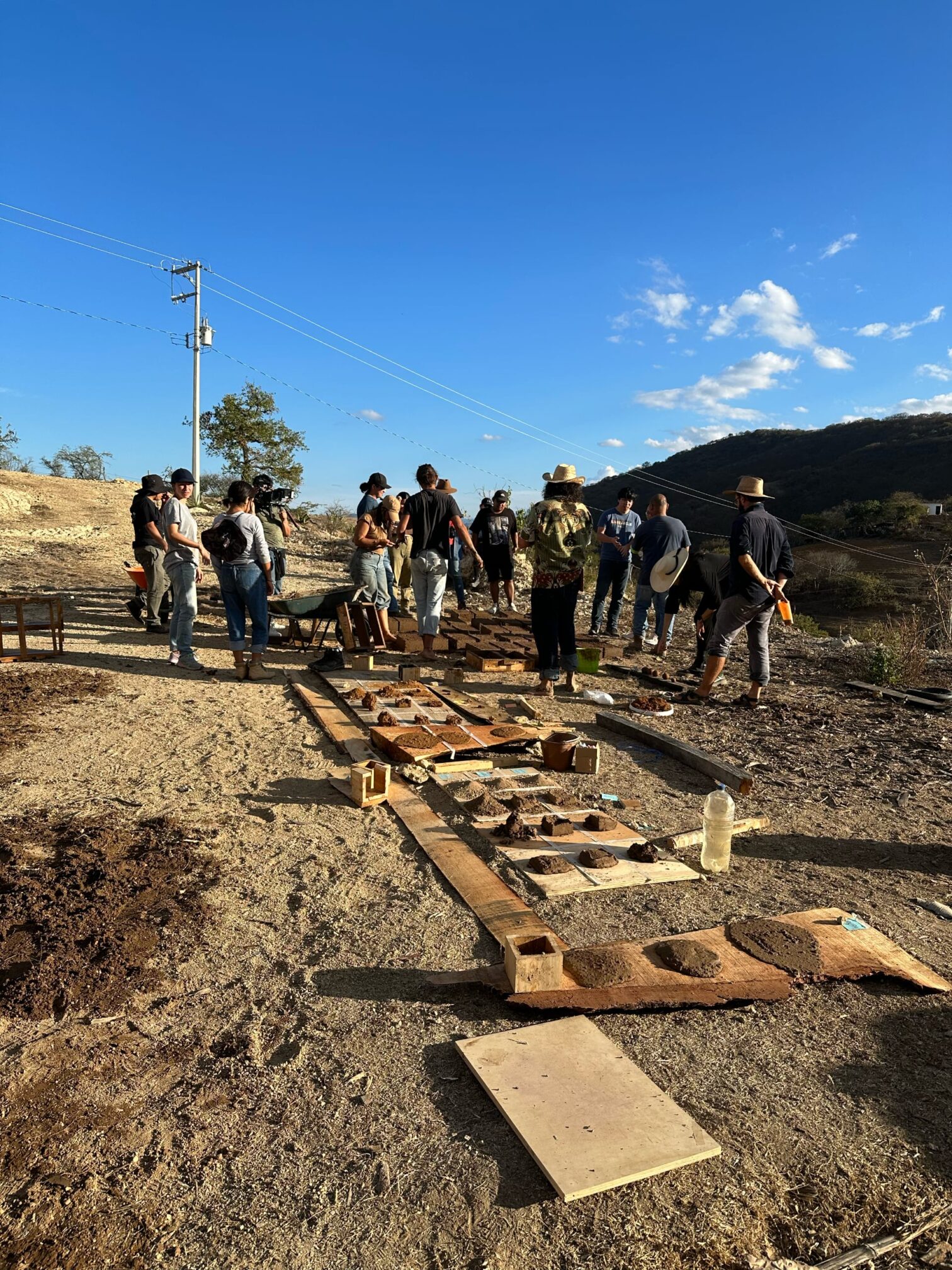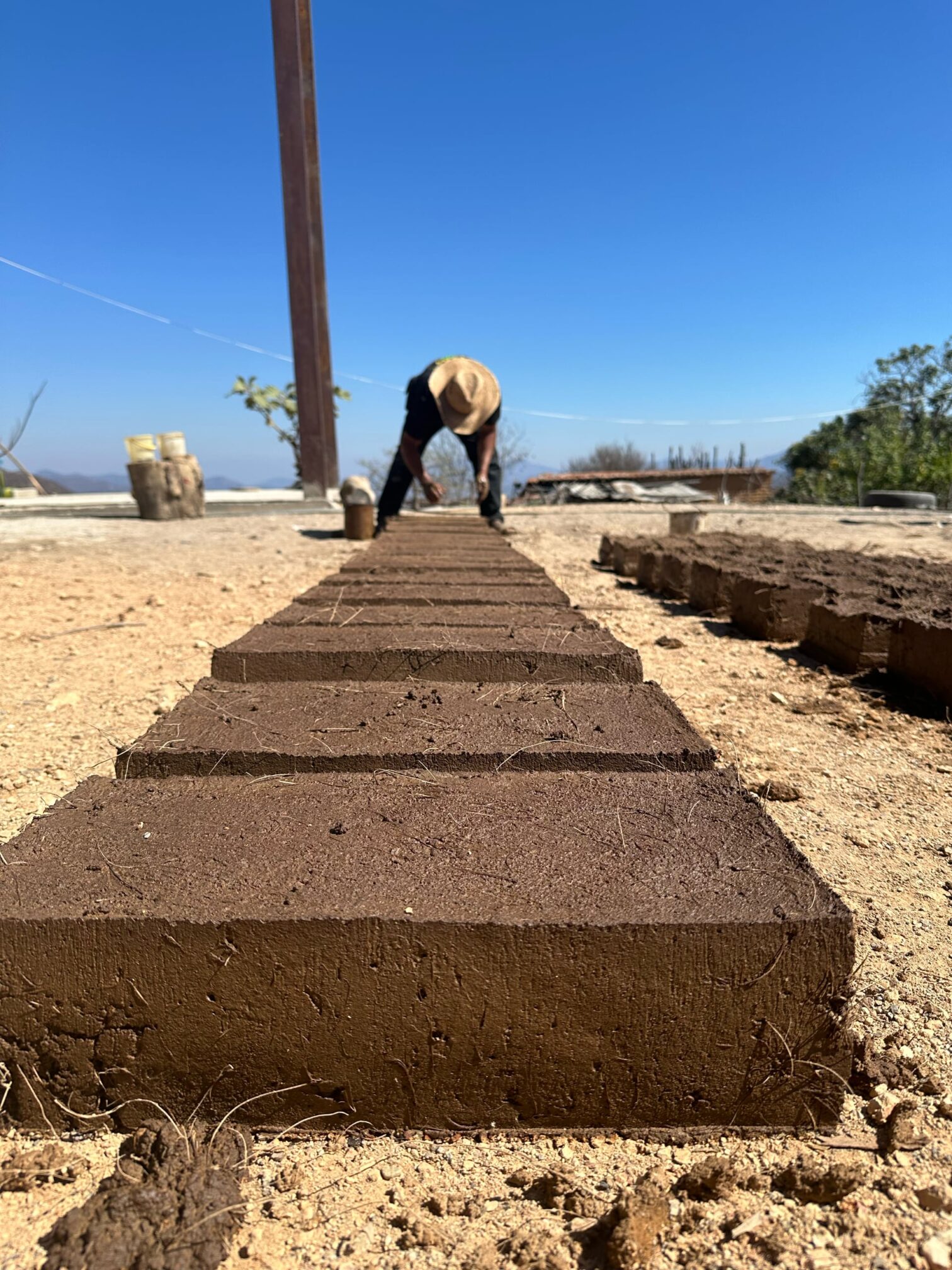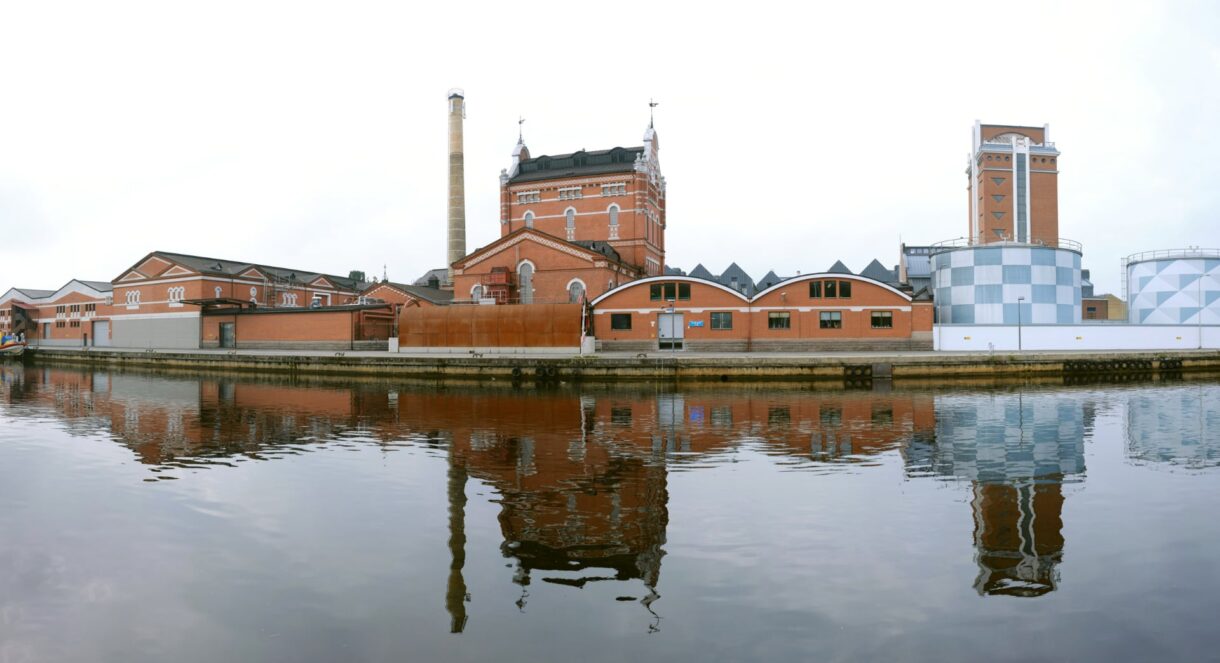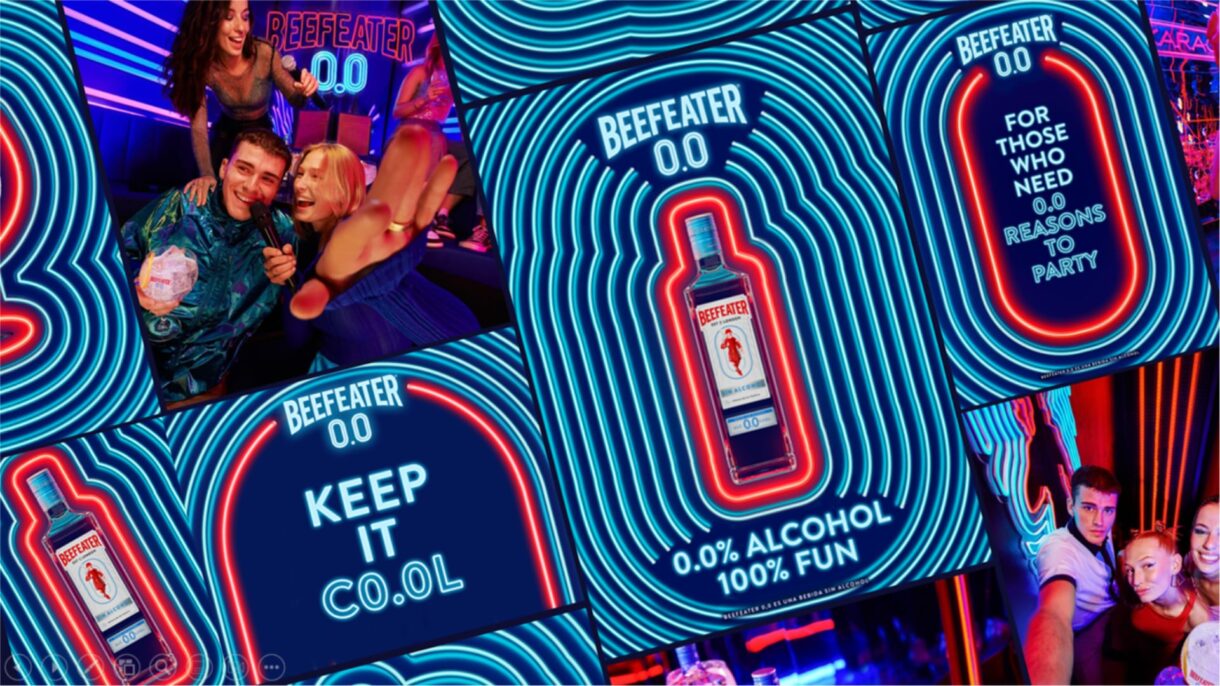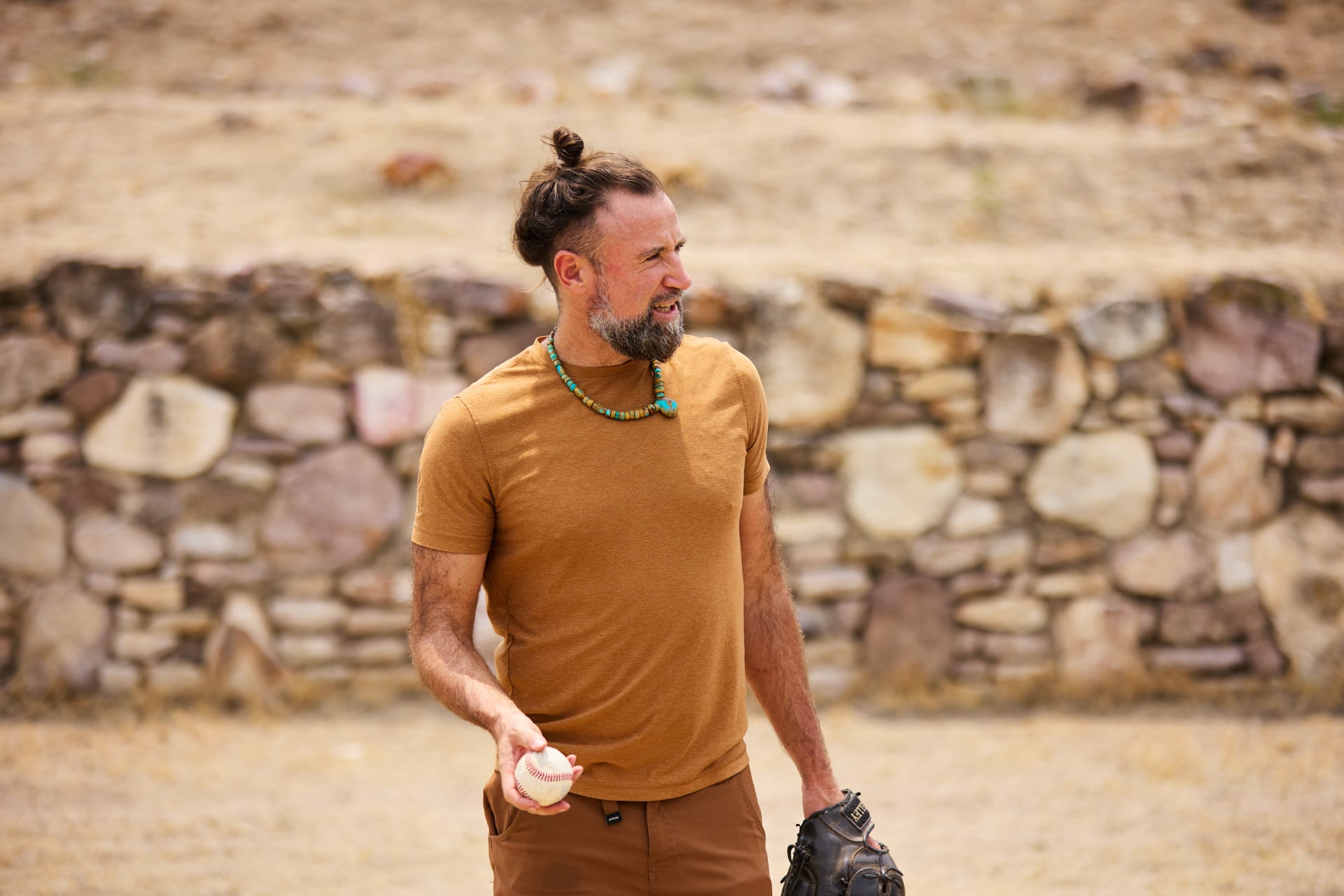
Building kitchens and patios using mezcal by-products
Building with adobe blocks and compacted earth is increasingly being overlooked by younger generations – but our mezcal brand Del Maguey has other ideas. It has initiated workshops to educate young architects and builders on how by-products from the mezcal production process can be upcycled to make building bricks.
History suggests that only the four elements are needed to make mezcal the old way: air, fire, water and earth – and it’s a tradition that Del Maguey continues to this day. Made by families in remote villages in Oaxaca and Puebla using handcrafted 400-year-old Zapotec methods – each of Del Maguey’s single-village mezcals uses the ripest heart of agave plants known as the ‘piña’. They are then distilled in a palenque (a mezcal distillery) – a rustic, open-air setup on the outpost of a family farm.
With such heritage, it is perhaps of little surprise to learn that Del Maguey is deeply committed to sustainability. This commitment is ever more important as it seeks to protect the unique authentic process amid mezcal’s growing global popularity. “Mezcal has always been a small industry with a minimal environmental footprint because it was small and it didn’t take away too much from the earth, but now we must keep it that way,” says Gabriel Bonfanti, head of Sustainability at Del Maguey.
In recent years Del Maguey has undertaken several initiatives embracing conservation, reforestation and community partnerships to empower farmers and communities. The programmes aim to protect the wild agave plants at the heart of mezcal production and look to make good use of the significant amounts of by-products generated during fermentation and distillation.
Mezcal has always been a small industry with a minimal environmental footprint because it was small and it didn’t take away too much from the earth, but now we must keep it that way.
The durability of adobe bricks
The two core by-products of the mezcal distillation process are bagazo (the left-over fibre) and vinazas (the liquid waste), the vinaza is highly acidic and would make water undrinkable and harmful to fish and plant life if it were to reach streams or rivers. Del Maguey and other mezcal producers in the region are looking into different solutions, like using it for biogas production or transforming it into other products. The adobe bricks are one of these solutions. It turns out that mixing the solid fibre waste and the liquid waste (vinazas is an excellent binding agent) with soil makes for durable adobe building bricks. These bricks are also flexible, which means they are more resistant to cracking during earthquakes than traditional adobe bricks.
“When the Spanish arrived in Mexico, there were 400 uses for the agave plant. It is such a durable material – so much of it can be utilised!” says Gabriel. “In 2018, we started the compacted earth project at the San Luis Del Rio palenque and explored how we could use recycled by-products from the mezcal production process. Instead of donkey manure, we used bagazo and instead of water, we used vinazas, which becomes resistant and is a compactable agent. Over five years, we used 100 per cent of the bagazo waste and 80 per cent of the vinazas waste to build a 7,500 sqm, 2m high patio.”
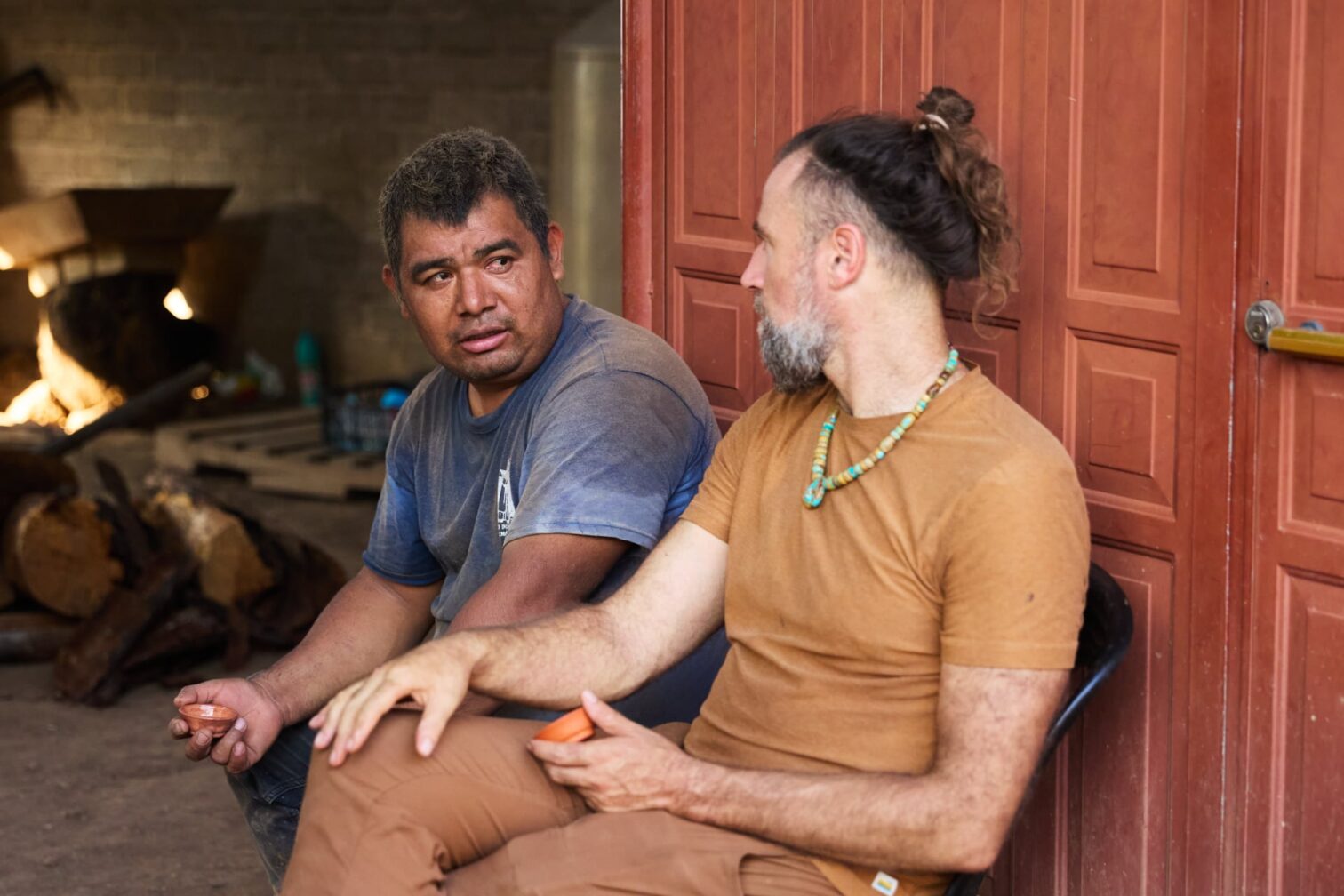
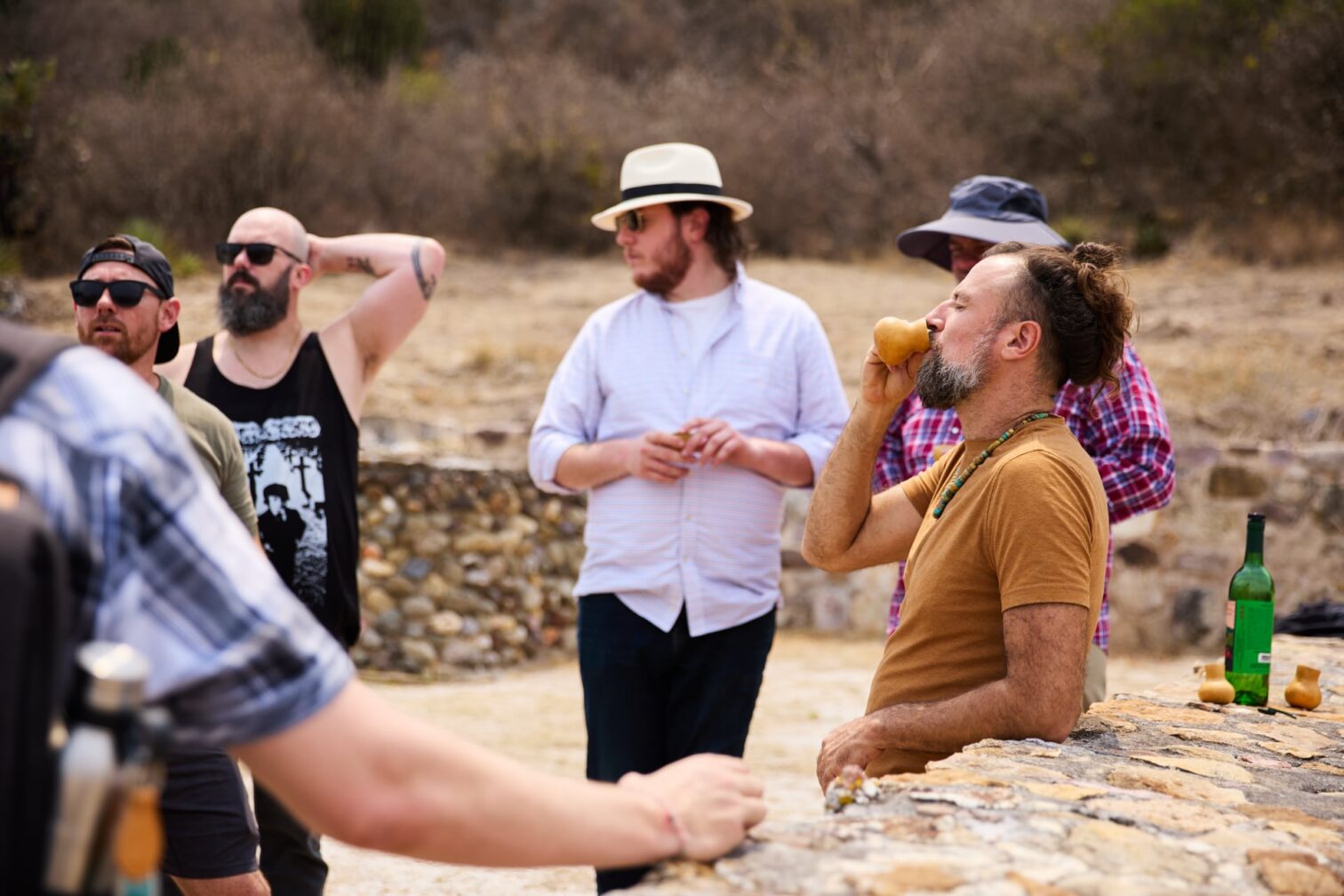
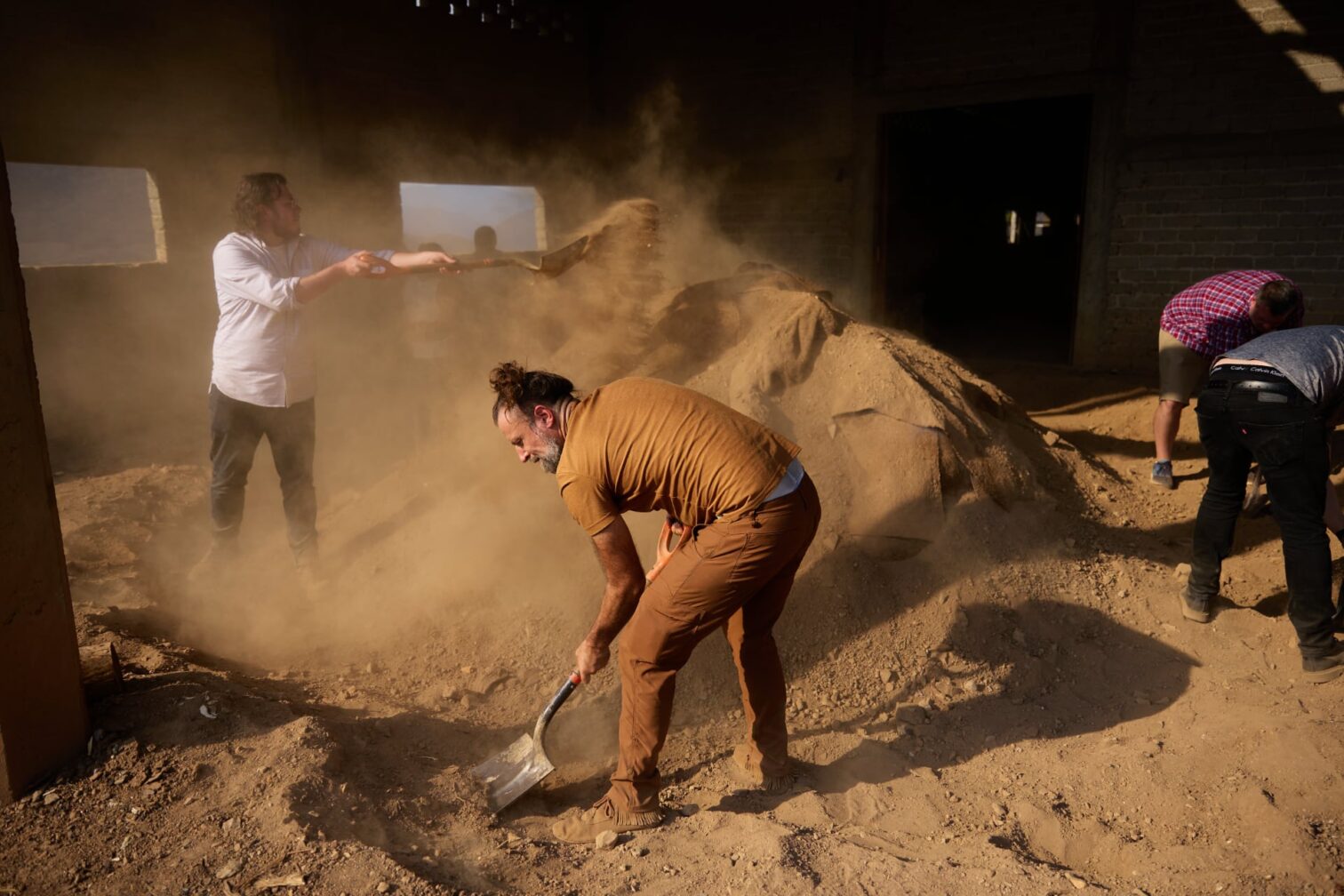
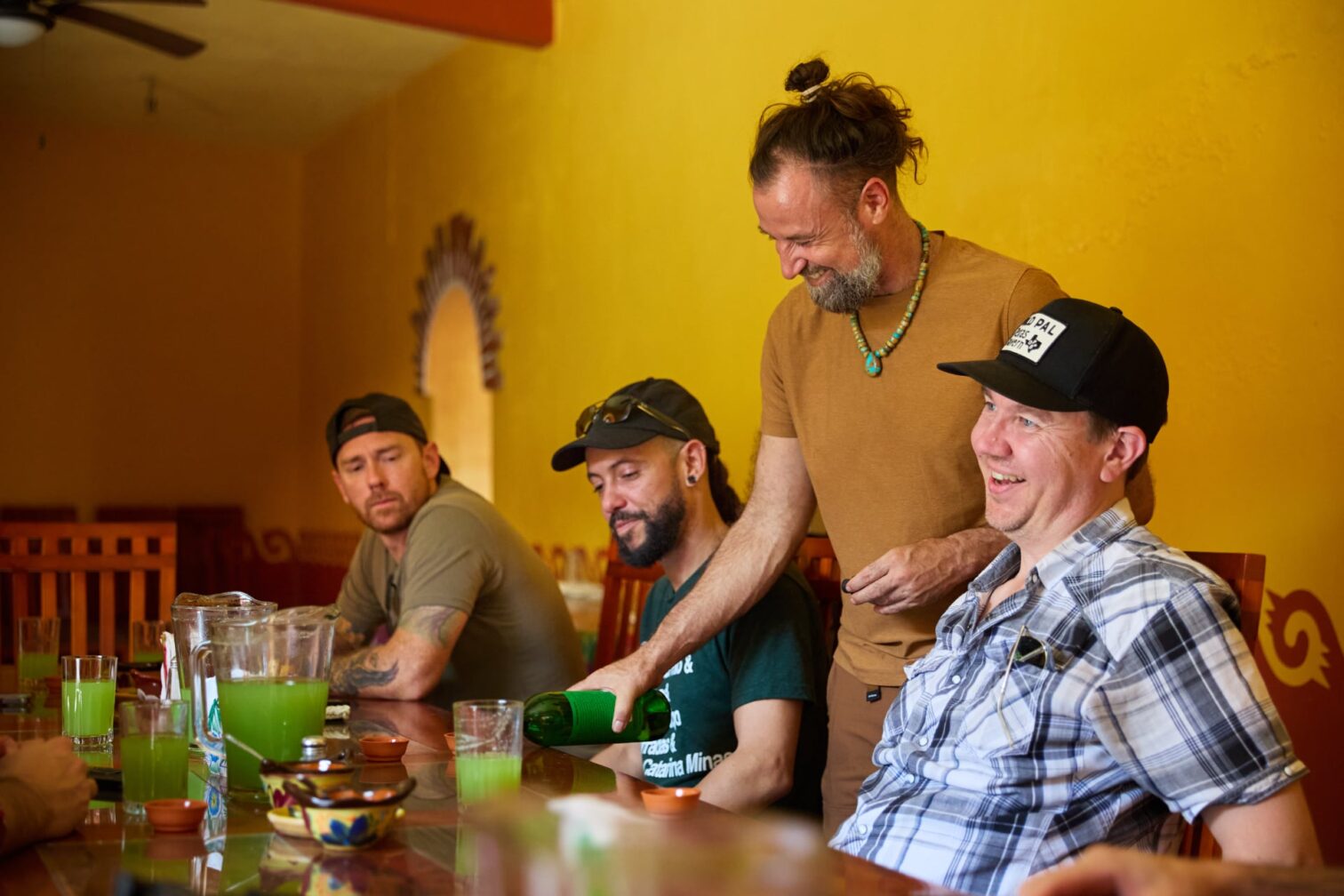
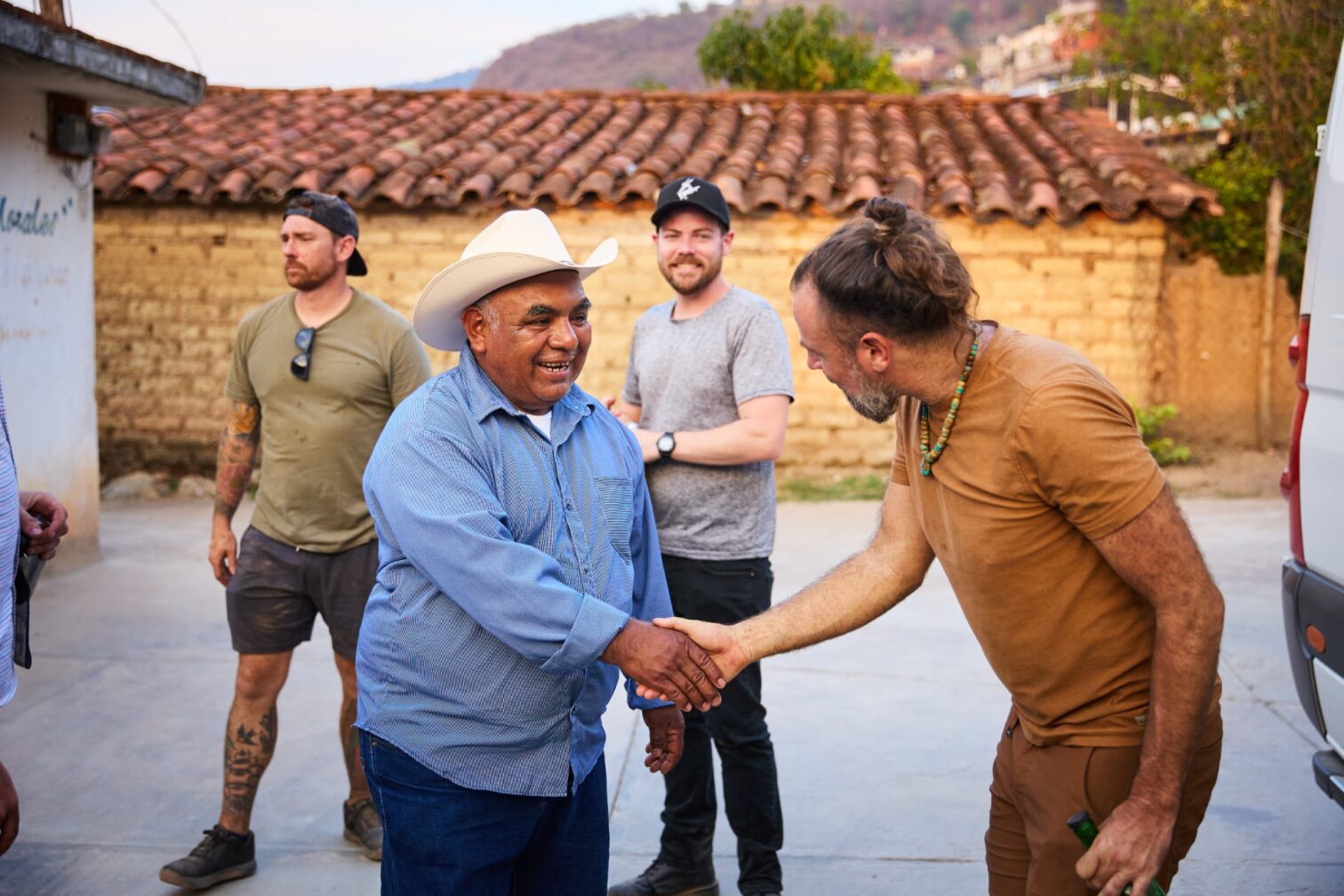
Construction workshops
The success of the San Luis Del Rio project in managing this by-product resource morphed into two construction workshops. These were held in 2022 and 2023, at the palenque of Luis Carlos Vasquez where Del Maguey’s varieties of mezcals are produced. Local architect and construction students, many of whom grew up in villages or families that produce mezcal, were among the attendees taught by Alejandro Montes, the founder of the COAA (Consejo Oaxaqueño de Agricultura Alternativa), an organisation that works to promote sustainable practices in mezcal production. Alejandro is a prominent figure in the field of adobe construction having used and studied (four years ago, Del Maguay sponsored part of his PhD studying vinazas) mezcal by-products for a decade.
“Adobe construction and compacted earth have been used by villagers for a long time, but this application is fading as younger generations turn to modern construction materials such as concrete. It’s the older generations who have the knowledge and are aware that adobe captures the cool in the summer and keeps you warm in winter,” says Gabriel. “Our push to showcase adobe using adobe blocks in Santa Catarina Minas, where this ancestral technique (adobe with mezcal by-products) began. We are also about to finish using adobe to build a smokeless kitchen in Las Milpas that will reduce the amount of firewood used.”
It’s the older generations who have the knowledge and are aware that adobe captures the cool in the summer and keeps you warm in winter.
Harnessing the mystery of agave
Indigenous communities in Mexico had been creating a primitive form of mezcal for centuries, harnessing the mystical qualities of the agave plant long before the Spanish conquest of Mexico in the 16th century. But the art of Mezcal production was refined as the Spanish conquerors introduced distillation techniques and copper stills to the production process and the drink has evolved as a symbol of Mexican heritage and pride.
Mezcal is the predecessor to tequila but it is a drink in its own right with several key differences. Mezcal existed hundreds of years before tequila. And, mezcal can be made from over 60 varietals of agave (there are around 200 agave species overall with more than 150 solely from Mexico), while tequila can be made from only one (the blue Weber agave). Mezcal is made using traditional methods, so its alcohol level is stronger at an ABV of 45-55 per cent, while Tequila, which is made using modernised and efficient processes has an ABV of 38-40 per cent.
